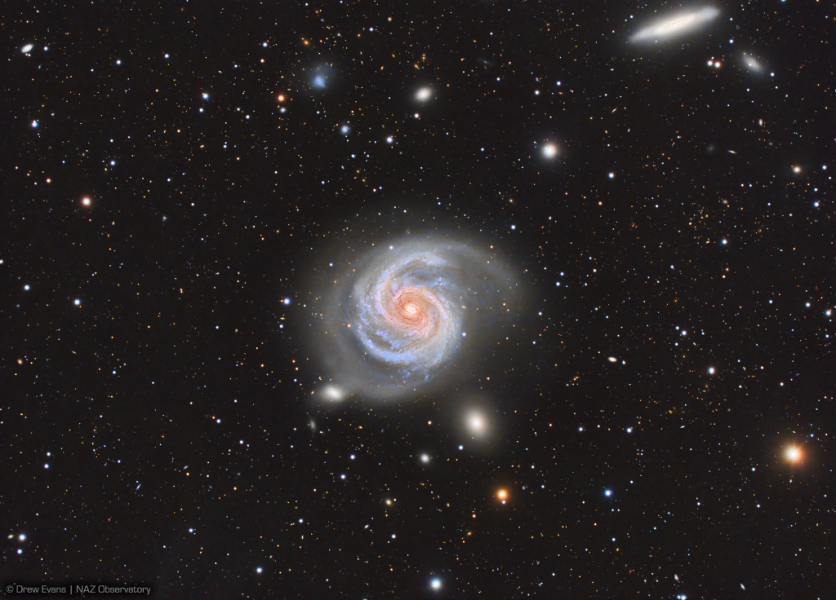NASA's Picture of the Day recently highlighted the breathtaking grandeur of the Grand Design Spiral Galaxy, M100, captured in a stunning image by astrophotographer Drew Evans.

The Majestic Display of M100
This majestic cosmic display showcases M100's well-defined spiral arms, reminiscent of our Milky Way, spanning a vast expanse of space.
The Grand Design Spiral Galaxy, also known as NGC 4321, is part of the Virgo Cluster of galaxies, located 56 million light-years away in the constellation Coma Berenices.
In the captivating photograph, M100 presents a face-on perspective, revealing its intricate structure and luminous blue star clusters amidst winding dust lanes.
This type of galaxy features prominently defined spiral arms that extend gracefully around its core, distinguishing it from other spiral galaxy variations.
The Variable Stars Within M100
M100 is celebrated for its majestic appearance, boasting well-defined spiral arms that closely resemble those of our own Milky Way. In Evans' photograph, M100 is presented in a face-on orientation, allowing viewers to appreciate its intricate structure.
It is interesting to note that a grand design spiral galaxy like M100 exhibits clear, sweeping spiral arms that extend prominently around its nucleus, distinguishing it from other spiral galaxy classifications like multi-arm and flocculent spirals, which have subtler structural features
Moreover, M100 plays a significant role in cosmological research. Scientists have leveraged observations of variable stars within M100 to make critical determinations about the size and age of the Universe, according to NASA.
Read Also : NASA's James Webb Space Telescope Will Look for Signs of Life in New 7 Earth-sized Planets Around TRAPPIST-1
Webb and Hubble Views the Grand Design Spiral Galaxy
In related news, NASA's James Webb Space Telescope (Webb) and Hubble Space Telescope recently provided complementary perspectives on M100, revealing different aspects of its cosmic makeup.
Webb's infrared observations unveil gas and dust features in vivid shades of orange and red, accentuating intricate spiral patterns with jagged edges. These observations offer valuable insights into the distribution and composition of interstellar material within M100.

On the other hand, Hubble's visible light imagery portrays gas and dust as hazy dark brown lanes, shedding light on the galaxy's structure and star-forming regions with exceptional clarity.
Notably, Webb's high-resolution infrared views highlight bright knots of red and orange, indicative of active star-forming regions embedded within M100's spiral arms.
In contrast, Hubble's images capture young stars in vibrant blue and purple hues, showcasing the dynamic nature of stellar birth and evolution within the galaxy.
Furthermore, Webb's observations reveal intriguing details such as bright red diffraction spikes emanating from a galaxy's core, signifying the presence of an active supermassive black hole. These distinct features ultimately offer valuable insights into the galactic dynamics and central regions of M100.
Related Article : NASA's Hubble Space Telescope Captures 'Butterfly Nebula' In Stunning Motion | Fun Facts About This Beautiful Space Butterfly

ⓒ 2025 TECHTIMES.com All rights reserved. Do not reproduce without permission.




